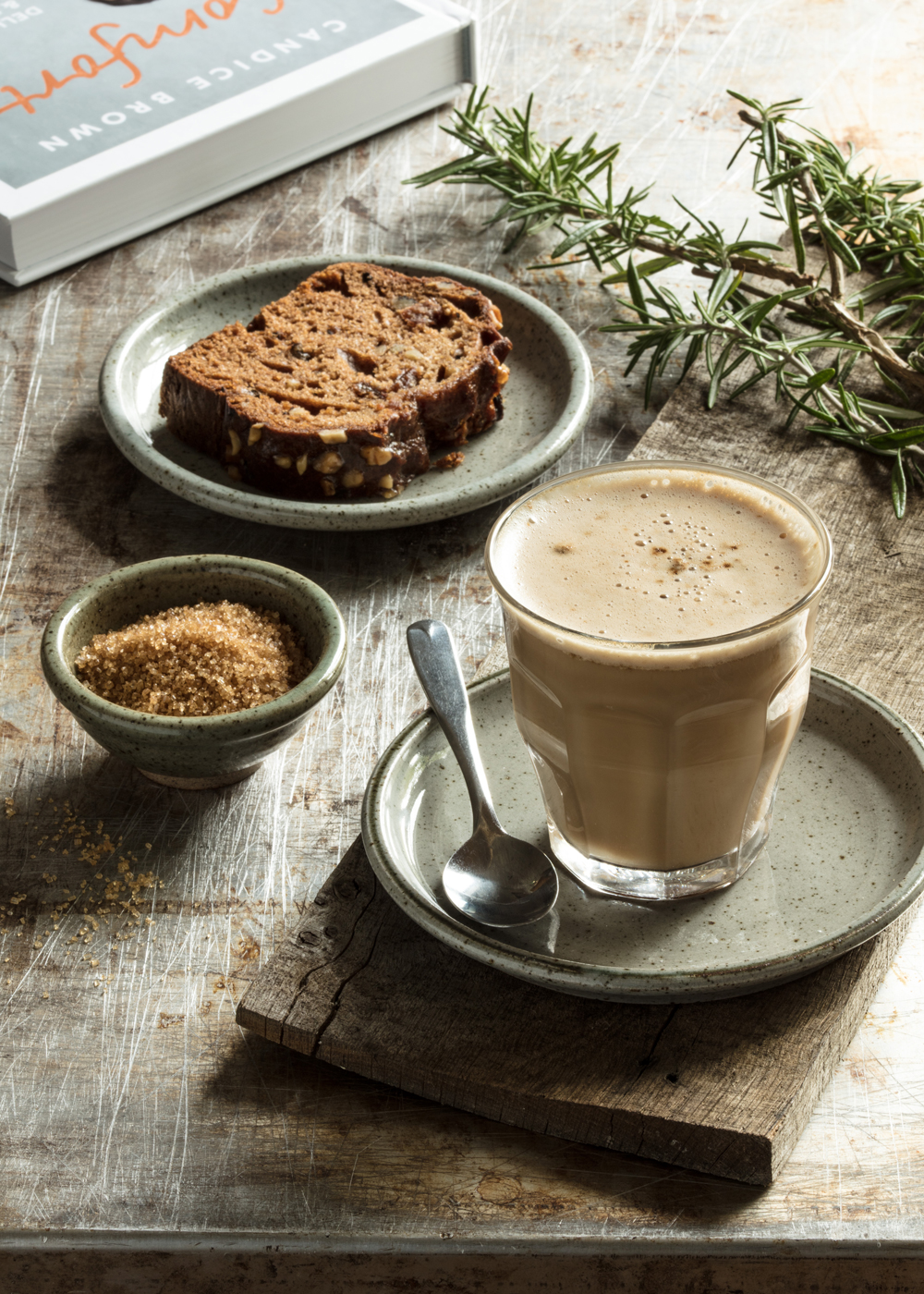About Time: You Got Creative with Billington’s Barista Coffee SugarsBy Angelica Malin
With The London Coffee Festival on the horizon, we’ve partnered with Billington’s, the pioneers of unrefined sugars, to celebrate the launch of their brand new special Barista Coffee Sugars. Billington’s award-winning rich and delicious Barista Coffee Sugars have won a Great Taste Awards – and we know why. The Barista Coffee Sugars are made using Billington’s unique process of locking in the natural caramel flavours of the molasses found in the sugar cane – meaning the sugar is brown inside and out – this process delivers extraordinary taste.

If you’d like to try them yourself, find them at The London Coffee Festival at the Old Truman Brewery, Brick Lane, 1st Floor, Stand HP4A from 28th-31st March 2019. Why not get creative and recreate your coffee shop experience, at home, with these classic coffee recipes by Barnaby Hatch? Here’s the lowdown:
Recipe: Billington’s Espresso

‘A good espresso is the basis for any home espresso machine experience, if you can master these techniques, you’ll be able to make barista level coffee from the comfort of your own home.’
Method:
- Remove the portafilter. Make sure the basket is clean and dry before use. Weigh out 19-21g of freshly ground coffee for a double shot and 14-18g for a single. If your espresso machine struggles with pressure (anything below 3 bars) opt for the lower dose. Grind it to the consistency of fine sand and carefully fill the basket. Level it evenly before tamping. *Make sure you tamp flat and not at an angle.
- Briefly purge water through the group head to clean any old coffee grinds away before putting your portafilter back into the group head.
- Turn on the group head for the espresso to pour. For a double shot, you will use 70ml of water, and 35ml for a single shot. The espresso should start to pour with a slight hesitation and will be deep in colour and then slowly start to thicken and lighten in colour.
- As soon as it starts to pour more freely and becomes almost translucent and watery, stop your shot. This should all happen within 25 -30 secs. If your shot pours slowly and tastes bitter, grind your coffee coarser. If it pours too quickly and is sour, grind your coffee finer. A good tasting espresso should be both sweet and full-bodied, with a well-rounded flavour.
The days of bitter coffee will be behind you, if you add their unique sugar for coffee to your espresso.
Recipe: Billington’s Cappuccino

‘In a world dominated by ‘hipster baristas’ and their strive to impress you with ‘latte art’, the Cappuccino has been slightly forgotten, but this classic has life in it yet. Its beauty is its simplicity, though it takes a well-practiced hand to produce those wonderful creamy, white soft peaks of foam. So get steaming!’
Method:
- Make a double shot into a pre-heated 8oz/250ml cup.
- To steam your milk correctly for a Latte, take a 300 ml metal milk jug and pour in cold full fat milk or for the best dairy alternative, oat milk, filling it just over half way. It is important to have enough milk, as it can quickly over heat when steaming.
- Angle your milk steamer straight down and place the end just under the surface of the milk. This will avoid any mess when you turn it on.
- Turn your steamer on to full and slowly move the jug down to expose the air holes on the end. You should hear the sound of ripping paper. As you move the jug down, the surface of the milk will stick to the steamer, stretching the steamed milk. The more you move it down; the more foam will be produced. For a Cappuccino, stretch the milk no more than 2cm in a jug this size.
- Just as the milk temperature changes from cold to slightly hot, put the steamer back under the surface of the milk. At this point there should be no sound. If you tilt your jug on a slight angle, it should create a whirlpool and will give you a better milk texture.
- As the jug becomes too hot to touch, take one hand away and turn off the steamer. Taste the milk to check temperature. If you prefer it hotter, after taking your hand away, wait a few more seconds before turning it off. Avoid going too hot though, as this will change the flavour.
- Wait a few seconds before pouring, as you will notice the milk slightly thicken, exactly what we want for beautiful Cappuccino. Carefully swirl the milk until you have a thick, glossy texture.
- To pour, tilt your cup on a 45-degree angle, so the espresso is at the lip of the cup. Put your jug over the cup, 1cm in from the lip, very close, almost touching the espresso.
- Pour at a quick, steady pace, tilting the cup back to being flat as you do so. You should have a glossy dome of white milk with a slight coffee ring surrounding it. Dust with cocoa.
Adding Billington’s specially selected sugar for coffee to your Cappuccino coffee will deliver you with a warm and rich flavour like no other.
Recipe: Billington’s Iced Coffee

‘That life changing moment when on holiday in a hot country, exhausted from sightseeing in the midday sun, and you sit at a café and unexpectedly ask for an iced coffee. Iced Heaven’.
- Follow the espresso recipe to make the perfect espresso, replacing the cup for a 300ml glass. Add a teaspoon of sugar for coffee now, as the heat will help it dissolve.
- For an Iced espresso, simply add ice and drink straight away.
- To make an Iced Americano, add ice and approx. 150ml of cold filtered water.
- For Iced Lattes, add ice then approx. 150ml of cold full fat milk or your favourite no-dairy equivalent.
- To make Frappes, blend your Ice Latte in a food processor and add cream or ice cream to taste.
When you dissolve their special range coffee crystals in your Iced Coffee it will instantly be infused with a fuller, intense, ‘how did I survive without this sugar’ kind of flavour.
Q&A
What if I don’t have a coffee machine?
Stovetop or ‘Moka’
‘Welcome to the ‘enigma’. Whether you’ve always had one in the cupboard, gathering dust or use it religiously but have never been shown how, here is the definitive way to create the ultimate home espresso with Italy’s trusty, ‘Moka’.’
- Boil some filtered water in a kettle. When using pre-heated water, you will avoid the slight metallic taste that can come from boiling the water in the pot with the coffee above it.
- While waiting for the kettle to boil, fill the filter basket with your finely ground coffee. Create a slight dome, leaving a small gap round the edge (when you screw the top part on, it will perfectly compress your coffee evenly into the basket).
- When the water is boiled, fill the bottom half of the Stovetop just below the line of the valve. Carefully place the filter basket back into the bottom half of the pot and screw on the top half. Be careful when doing this operation, as your boiled water will have made the metal pot quite hot by now. A robust dishcloth is very handy.
- Place the Stovetop onto a hob and turn on to a medium heat. Within a few minutes you will start to hear the water boil up into the top chamber. As soon as this happens turn off the hob and remove the pot. The gurgling of the espresso filling the chamber will continue for a moment, and then slowly stop.
Your espresso will be thick, dark, rich and packed full over flavour. If it’s too intense, you can always add hot water or milk to dilute.
Cafetiere
‘In the age of (coffee) enlightenment, the cafetiere has been somewhat forgotten. Pushed aside for more exciting, new ways of coffee preparation but with some care and attention, this tried and tested method can be as exciting as any other.’
- For every 250ml of water you will require approx. 15g (2tbl spoons) of coarsely ground coffee.
- Boil your water and wait a few moments for it to slightly cool.
- Pour a small amount of your water on to the ground coffee to wet all the grinds. It will start to bloom, at this point, pour the rest of your water in.
- Wait a minute before stirring your coffee in the cafetiere. Place the top on, resting the plunger on the surface of the coffee.
- Wait another 3 minutes before carefully plunging.
Pour immediately to avoid over brewing.
Milk
‘To get that professional coffee feel investing in a milk steamer really is the only way to produce the same texture you get when you enjoy your latte at your local coffee shop however you can still make these recipes at home by simply simmering milk on a stove and frothing with a hand-held frother.’
Sponsored post in partnership with Billington’s. Find them at The London Coffee Festival at the Old Truman Brewery, Brick Lane, 1st Floor, Stand HP4A from 28th-31st March 2019







